trenchless people
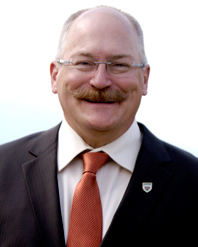 Scott Rosenthal, Associate Professor and Department Head of Mining Engineering at Montana Tech
Scott Rosenthal, Associate Professor and Department Head of Mining Engineering at Montana Tech
How long have you been involved with underground infrastructure and trenchless technology? What brought you to the industry and/or your specialty area?
In my career as a mining engineer I was never directly involved with trenchless technology applications. After becoming a professor of mining engineering, I had a graduate student look at a novel directional drilling concept for open pit mining and as part of that project we looked at existing trenchless technologies. Prior to this project, I had always been fascinated by tunnel boring machines (moles) from the mining side and what they have accomplished in civil infrastructure construction and mining applications. We are re-introducing an underground construction course for our students which will include an exposure to tunnel boring machines.
You’ve had a successful career in mining, both in the field and as an educator. What drew you to mining and eventually to teaching?
What drew me to mining was a fascination with minerals that my father, a ceramic engineer, instilled in me. Where do you find the best minerals? In mines. Once I began studying mining engineering, I realized the industry had the biggest and coolest machines around and I was hooked. It was always on my bucket list to teach and after doing several guest lectures at a couple of universities, an opening arose at my Alma Mater, so I applied and was selected to join the team.
Share one project/objective you and your students are working on or recently worked on.
Placement of our students is not always in mining engineering roles and a number of our graduates accept positions with heavy civil contractors. Adding a knowledge of trenchless technology to their education through our underground construction course will add another tool to their tool belt. The project I am working on is building the underground construction course with the aid of industry contacts and attending an industry sponsored education forum for university professors this summer.
Why did you join NASTT? Are you planning on attending No-Dig 2020?
I joined NASTT because it is the industry organization focused on trenchless technology. It will help me build the relationships I need to be successful in educating our students going forward. As the faculty advisor for our NASTT student chapter, my membership demonstrates to the students my commitment to supporting them, the profession and NASTT. I do plan on attending No-Dig 2020 and hope to be able to bring a few students along as well.
Any upcoming travel/vacation plans? Traveling with family, friends?
Sonya, my wife, and I are very involved with the Rocky Mountain Elk Foundation here in Montana. Our big summer get away is to the annual Rocky Mountain Elk Foundation’s Elk Camp in Park City, Utah. The rest of the summer is committed to enjoying the brief Montana summer and continuing work on an historic preservation project that we have.
Anything special you like to do when you’re not working?
Back to the love of minerals and mining—I do underground tours at the World Museum of Mining here in Butte to help out the museum and to help educate the visitors about the past and present importance of mining; and, occasionally I get out into the mountains to look for minerals and spend a little time panning for gold in a favorite creek.
Book you are reading? Construction Vibrations by Charles H. Dowding is my current reading of choice for two reasons: 1. back to the development of our underground construction course, this text helps quantify why trenchless technology has applications for large civil projects versus traditional underground drill and blast; and, 2. I am working on a PhD that may involve research around underground vibrations in adjacent openings from nearby blasting.
Sports team? Green Bay Packers
Android or iPhone? iPhone because a millennial once joked if I owned one, I couldn’t figure it out (he was wrong).
Favorite App? Any banking pp that allows me to deposit checks—what a time saver!
Interested in joining NASTT? Click here for more info or contact Carolyn Hook for details.
Industry News, trenchless people, trenchless products
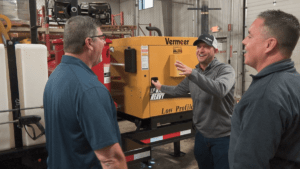 PELLA, Iowa, – With 24 locations throughout Michigan and Indiana, MacAllister Rentals, the region’s authorized CAT Rental Store, rents, sells, and services a wide range of high-quality equipment from Caterpillar and over 50 other manufacturers. As a part of the Indiana-based and family-owned MacAllister Machinery, MacAllister Rentals has an impeccable reputation for supplying contractors with first class service, in-depth technical knowledge, and top-notch equipment including the Vermeer Vac-Tron Series trailer vacs.
PELLA, Iowa, – With 24 locations throughout Michigan and Indiana, MacAllister Rentals, the region’s authorized CAT Rental Store, rents, sells, and services a wide range of high-quality equipment from Caterpillar and over 50 other manufacturers. As a part of the Indiana-based and family-owned MacAllister Machinery, MacAllister Rentals has an impeccable reputation for supplying contractors with first class service, in-depth technical knowledge, and top-notch equipment including the Vermeer Vac-Tron Series trailer vacs.
Project Challenge
The team at MacAllister Rental wanted to offer customers with an effective soft excavation method that would deliver outstanding productivity safely. They were familiar with vacuum excavators but wanted to find an equipment partner that manufactured quality machines that were easy to operate and efficient to run.
Solution
MacAllister Rental added Vac-Tron vacs to its fleet eight years ago. Since then, rental demand for these machines has increased significantly, and the rental store has continued to grow its fleet of Vac-Tron vacs. “We feel that CAT is the leader in the hydraulic excavator industry and the Vac-Tron series trailer vac is an industry leader in the vacuum excavator industry, so it fits very well with what we are trying to accomplish,” said Dan Hickman, district sales manager.
According to Chad Brogan, a sales representative with MacAllister Rental, most of their customers use Vac-Tron vacs for precise excavation when conventional excavation is not able to be used. “We have also found other uses for the Vac-Tron vacs with construction and foundation cleanup after heavy rains. It was a no brainer to add it to our fleet because we want to provide the best solutions for our customers,” he added.
Results
“Customers have commented that when they have these on their jobsites, they really have a vacuum, pressure washer, and an air compressor all built into one piece of equipment,” explained Hickman. “I can’t say it enough; contractors can be much more efficient using Vac-Tron vacs than other excavation methods when working around fiber optics, gas or water lines, as well as near foundations and wells. All that material gets sucked up into a self-contained unit, and they can dispose of it where they want to. Our customers get a cleaner jobsite, the job gets done faster with a lot fewer people, so it makes them money,” he concluded.
Learn more about Vac-Tron by visiting vactron.com.
Industry News, trenchless people
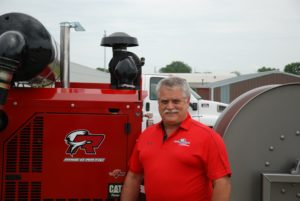 June, 2019 (Pella, IA) Ring-O-Matic is pleased to announce that Dave Langenfeld has joined the company as the Director of Engineering & Product Development. Dave comes to Ring-O-Matic with over 30 years of experience in the construction equipment industry at Vermeer Corp and most recently at Weiler. With a unique and experienced skill set in all aspects of engineering, Dave will provide fresh leadership to the engineering team and add significant value to the entire operation located in our Pella, Iowa location.
June, 2019 (Pella, IA) Ring-O-Matic is pleased to announce that Dave Langenfeld has joined the company as the Director of Engineering & Product Development. Dave comes to Ring-O-Matic with over 30 years of experience in the construction equipment industry at Vermeer Corp and most recently at Weiler. With a unique and experienced skill set in all aspects of engineering, Dave will provide fresh leadership to the engineering team and add significant value to the entire operation located in our Pella, Iowa location.
Dave has a proven record of not only leading new product develop, project timelines, efficiency improvements, and understands the changing climate of our industry, but most importantly has a proven ability to coach, mentor and drive for daily improvement across an organization
“Frankly I’m honored that someone with Dave’s experience, technical skills, and desire would entertain joining our Ring-O-Matic team.” stated Brian Metcalf CEO/Owner of Ring-O-Matic. “His background, experience and knowledge in product development within our industry is just not easy to come by, so we’re excited to have Dave’s leadership!” Metcalf said.
Ring-O-Matic is a leading provider of trailer and truck mounted vacuum excavation equipment and car wash pit cleaning machines. Founded in 1960, Ring-O-Matic products are known for their proven performance, innovation, reliability and built to last the rigors of job sites in the underground utility, municipal and water and gas markets. Headquartered in Pella IA, Ring-O-Matic employs a Sales, Engineering and Production team dedicated to building the industry’ s most productive vacuum excavation machines. Ring-O-Matic products are sold worldwide through independent equipment dealers.
Industry News, trenchless people
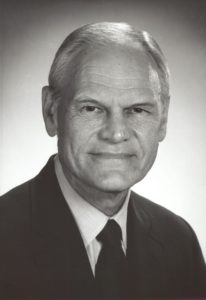 It is with deep sadness that The Robbins Company announces the passing of Richard James Robbins, President and CEO from 1958 to 1993. Dick passed away surrounded by family on Thursday May 30, 2019 in Seattle, Washington, USA. He is survived by his wife Bonnie, son Jim and daughter Jennifer.
It is with deep sadness that The Robbins Company announces the passing of Richard James Robbins, President and CEO from 1958 to 1993. Dick passed away surrounded by family on Thursday May 30, 2019 in Seattle, Washington, USA. He is survived by his wife Bonnie, son Jim and daughter Jennifer.
Dick Robbins was widely regarded as a titan of the tunneling industry and built The Robbins Company into an industry leader, from the first Double Shield machine to modern-day disc cutters for hard rock, to his notable TBM innovations at the Channel Tunnel connecting the U.K. and France. In total he filed 11 U.S. patents and 56 foreign patents in the field of underground mechanical excavation, and ultimately won the 2009 Benjamin Franklin Medal in Engineering for his contributions. He accomplished all of this after taking over the company at the age of 25 following the untimely passing of his father James S. Robbins in a plane crash.
“In 1968 when I first had the chance to work for what was then known as James S. Robbins Co., I did not fully appreciate that I was getting a chance to work with the greatest innovator in the tunneling industry,” said Robbins President Lok Home. “Dick was a great mentor as a boss and as a person. He was always pushing the limits of what could be done with TBMs. Dick’s integrity, energy, and passion improved the worldwide tunneling industry, and his creations set many of the industry standards. It has been an honor to further the great name of Robbins in the industry.”
“Dick unselfishly gave back to his industry and to his community,” said consultant and former ITA President Harvey Parker, a long-time friend of the Robbins family. “He was very active in our industry’s professional associations both here in the United States and internationally. I was honored to work closely with Dick during his significant involvement in the International Tunnelling and Underground Space Association (ITA) where he served on the Executive Council for years, was elected First Vice President, and was a leader for the ITA Working Group on Mechanized Tunnelling.” Dick’s many awards garnered over the years included numerous honorary degrees, memberships and directorships in a wide variety of organizations ranging from Virginia Mason Medical Center to the Board of Trustees at his alma mater Michigan Technological University. In 1999, the Engineering News-Record selected him as one of the “125 Top People of the Past 125 Years,” an equipment innovator who “helped shape this nation and the world.”
He was well-known in Seattle for his active contributions in community organizations and sports. “Dick was a wonderful family man,” said Parker. “He was a great personal and professional friend who was always charming and pleasant. He designed and lived in his own innovative floating home (houseboat) on Lake Union in Seattle. He was an avid and very competitive sailor who designed a state-of-the-art sailboat in which he raced worldwide in races such as the famous Sydney-Hobart race. Dick was also very active and competitive in water sports, particularly in rowing crew races. Dick will be sorely missed, not only by those of us in the tunneling industry but also by those in the many other fields of endeavor that he touched during his active life.”
Industry News, trenchless people
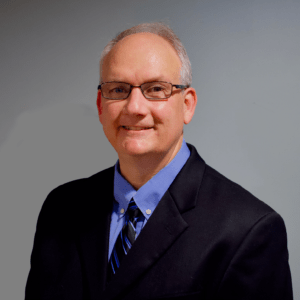 THOMPSON, CONNECTICUT USA, May 1, 2019:
THOMPSON, CONNECTICUT USA, May 1, 2019:
Numa, the world’s leading drilling technology provider, has announced the appointment of Mark Stickney to the position of Chief Financial Officer. Mark will succeed Joe Tokarz, who served as CFO for over 30 years and retired in April 2019.
Mark is a finance leader with a proven track record of driving performance and process improvements in highly diversified manufacturing businesses. He brings over 25 years of top level financial experience and leadership to the organization. This is Mark’s second stint with Numa as he was previously a Senior Cost Accountant for the company in the late 1990’s.
“We are very pleased to welcome back Mark as our new CFO,” said Numa President, Ralph Leonard. “Mark’s past experience with Numa and his deep expertise in operational finance makes him uniquely qualified for this role. We look forward to him joining our leadership team and helping us execute on our growth plans while maximizing profitability.”
Prior to joining Numa, Mark served in various finance and accounting management roles for Saint-Gobain Ceramics & Plastics, Inc. (Euronext: ISIN FR0000125007), a multinational corporation that produces a variety of construction and high-performance materials. In his most recent role, he was Director of Finance Worldwide where he supported a multi-million dollar manufacturing division with multiple global locations. His responsibilities focused on business outcomes and efficient and effective business processes. He holds both a MBA and Bachelors of Science degree in Accounting from the Nichols College.
“I’m very excited to re-join Numa,” Mark stated. “Numa is well known for its industry-leading products and service, which make it possible for its customers to quickly solve complex drilling challenges. I look forward to applying my experience to help drive growth and profit for the business.”
ABOUT NUMA
Numa is the world’s leading drilling technology provider, dedicated to ongoing product innovation and results-oriented consistency. We’ve built a strong legacy of high quality, U.S. made hammers and bits for drilling holes 3½ – 50½ inches (89 -1283 mm) in diameter. With over 100 hammer and bit products serving 11 different industries, our products are capable of drilling vertical, horizontal, and reverse circulation holes in hard rock and unconsolidated formations.
Industry News, trenchless people
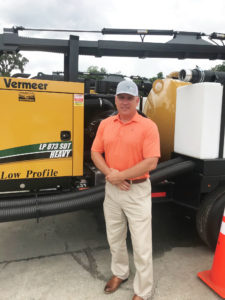 Jason Dewitt joins the Vermeer team with 12 years of experience of various equipment industry roles
Jason Dewitt joins the Vermeer team with 12 years of experience of various equipment industry roles
GREENVILLE, South Carolina, May 28, 2019 — Vermeer MV Solutions is building upon its already strong customer service in the drilling industry with the addition of Jason Dewitt as the new west coast regional sales manager based out of Exeter, California. In his new role, Dewitt will manage sales activities within his region and provide quality support to the dealers in those territories by determining dealer sales and marketing needs.
Over the years, Dewitt has held various equipment sales roles with increasing responsibilities — including previous positions with Vermeer Pacific and Vermeer Rocky Mountain. He has also served in the United States Air Force and as a police officer in Billings, Montana, and Visalia, California.
“Jason’s previous roles in equipment sales and his career as a police officer have molded him into an efficient leader with a team-oriented mindset,” said Vermeer MV Solutions director of sales Brian Showley. “We have no doubt that he will be able to hit the ground running with his passions for building strong relationships and providing quality customer service.”
Learn more about Vermeer MV Solutions by visiting Vermeer.com.
 Scott Rosenthal, Associate Professor and Department Head of Mining Engineering at Montana Tech
Scott Rosenthal, Associate Professor and Department Head of Mining Engineering at Montana Tech
 PELLA, Iowa, – With 24 locations throughout Michigan and Indiana, MacAllister Rentals, the region’s authorized CAT Rental Store, rents, sells, and services a wide range of high-quality equipment from Caterpillar and over 50 other manufacturers. As a part of the Indiana-based and family-owned MacAllister Machinery, MacAllister Rentals has an impeccable reputation for supplying contractors with first class service, in-depth technical knowledge, and top-notch equipment including the
PELLA, Iowa, – With 24 locations throughout Michigan and Indiana, MacAllister Rentals, the region’s authorized CAT Rental Store, rents, sells, and services a wide range of high-quality equipment from Caterpillar and over 50 other manufacturers. As a part of the Indiana-based and family-owned MacAllister Machinery, MacAllister Rentals has an impeccable reputation for supplying contractors with first class service, in-depth technical knowledge, and top-notch equipment including the  June, 2019 (Pella, IA)
June, 2019 (Pella, IA)  It is with deep sadness that
It is with deep sadness that  THOMPSON, CONNECTICUT USA, May 1, 2019:
THOMPSON, CONNECTICUT USA, May 1, 2019: Jason Dewitt joins the Vermeer team with 12 years of experience of various equipment industry roles
Jason Dewitt joins the Vermeer team with 12 years of experience of various equipment industry roles